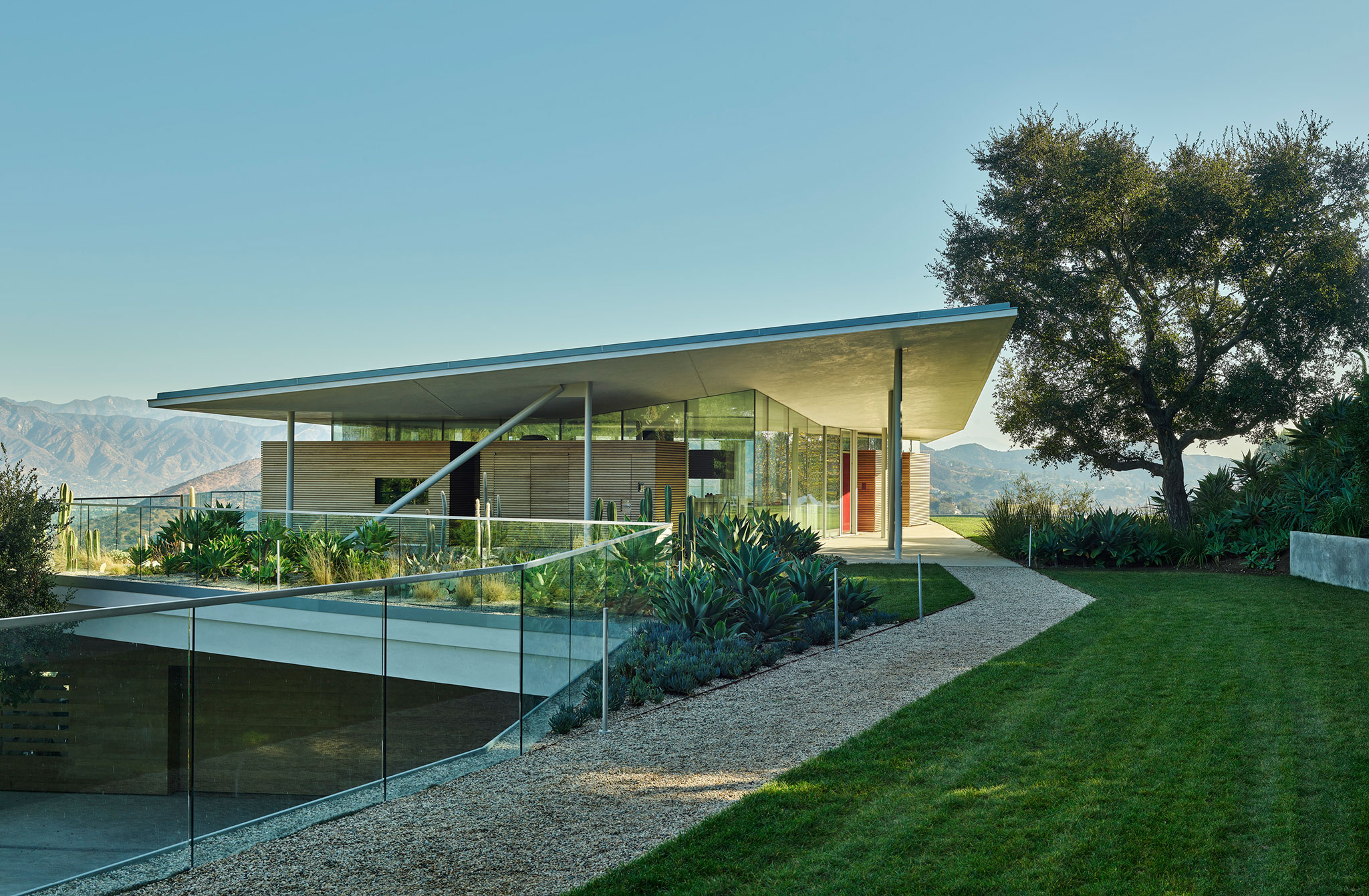The building can be described as a glass-walled pavilion that creates a “loft” space for communal activities of living, cooking, dining and entertaining, serving as an umbrella to maintain the simplicity and openness of the spaces that generate a program. messy. Natural light was one of the main axes of the project, in this way, whether in one corner or another of the house, depending on the season of the year and the time of day, there is always natural light inside the house.

California House by GLUCK+. Photograph by Timothy Hursley.
Description of project by GLUCK+
The site is spectacular, a steep north-facing hillside with unobstructed views of the mountains beyond and a 180-degree panorama from the Hollywood sign in the east to the Burbank airport in the west. Building on this site, long considered unbuildable, presented two challenges: first, to minimize the impact of the house on the landscape and second, to create sufficient flat area to be comfortable for outdoor activities.
The solution bifurcates the building, each half with its distinct tectonic and programmatic function. The lower floor is carved into the hill and with its expanse of green roof, it creates a strong ground-plane, or bench, in the steeply sloping land. Bedrooms, bathrooms, storage, media room and other family and utility spaces are arrayed along the hillside. This section, though large, is meant to be essentially invisible.

California House by GLUCK+. Photograph courtesy of GLUCK+.
This invisibility contrasts with the strong sculptural form that the house presents to the viewer. A glass-sided pavilion creates a loft-like space for the communal activities of living, cooking, dining, entertaining, and so on. Everything here is configured to maintain the simplicity and openness of the space. Kitchen and spatial divisions never touch the ceiling so that it seems to float above on independent steel supports. Three solid wood-faced “boxes” (the only interruption in the glass) contain “messy” program elements, including closets, fireplace, TV screen, pantry, kitchen office, and powder room, maintaining the integrity of the large space.
Like a vast parasol, the roof of the house is a rectangle with upturned edges that extend well beyond the footprint of the rectangular pavilion. The roof is twisted in relation to the glass rectangle, making it seem to float and creating shade in and outside the house. Depending on the time of day or season of the year, at one corner or another, there is always either shade or sunlight to be found.














































